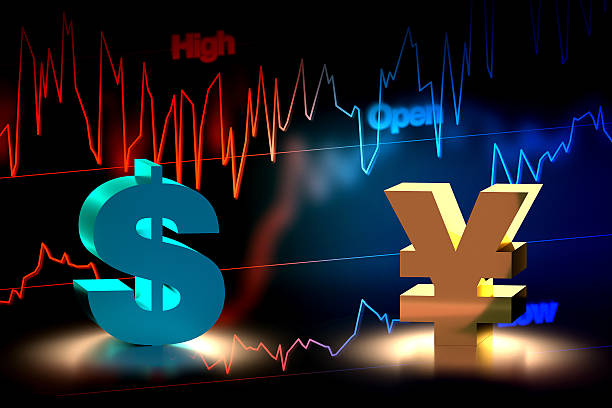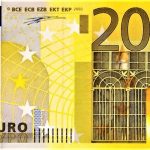Japanese yen Gains as Tariff Fears Grow.
The Japanese Yen (JPY) is showing strong performance against the US Dollar (USD), and investors are taking notice. In times of global uncertainty, especially economic tension like the one triggered by US President Donald Trump’s tariff policies, investors often turn to safer investments. That’s where the Japanese Yen comes in. It’s viewed as a “safe haven” currency—something that holds value even during market storms.
After Trump announced new tariffs, global markets responded with anxiety. Stock indices fell sharply, with the S&P 500 facing its worst four-day streak since the 1950s. When investors get nervous about potential global recessions, they typically shift their money out of risky assets like stocks and into more stable ones like the JPY, gold, or US Treasury bonds. This move away from risk pushes up the value of the Yen.
US-Japan Deal in Sight Boosts the Yen
There’s more behind the Yen’s strength than just fear. Optimism is building over the possibility of a trade deal between the United States and Japan. President Trump and Japanese Prime Minister Shigeru Ishiba have reportedly agreed to maintain open communication to resolve trade issues. Trump also said, “We have a great relationship with Japan and we’re going to keep it that way.”
Such positive comments fuel hopes that tensions might cool and a beneficial deal could be reached. This improves confidence in Japan’s economy and adds more support to its currency. If Japan can avoid being caught in a damaging trade war and instead secure favorable terms, the JPY will likely stay strong or even rise further.
The Battle of Central Banks BoJ vs. Fed: Different Paths, Same Impact
Another major reason the Yen is rising is the difference in monetary policy expectations between Japan and the US. The Bank of Japan (BoJ) and the US Federal Reserve (Fed) are heading in very different directions when it comes to interest rates.
Japan has experienced very low inflation for years, but things are changing. Inflation is finally rising, and the BoJ is signaling it may raise interest rates again in 2025 if the trend continues. This is a big shift for Japan, and markets are paying attention.
In contrast, the US is facing possible economic slowdowns due to Trump’s tariff strategy. As a result, many investors believe the Fed will be forced to cut interest rates instead of raising them. In fact, markets now expect the Fed to lower rates multiple times this year.
This divergence—Japan becoming more hawkish (favoring higher rates) while the US turns dovish (favoring lower rates)—makes the Yen more attractive compared to the Dollar. Higher interest rates typically strengthen a currency because investors want better returns.
Fed Rate Cut Bets Sink USD
The US Dollar is feeling the heat from both economic worries and shifting Fed expectations. With investors increasingly convinced that the Fed will have to slash rates soon, the Dollar is losing support. According to the CME FedWatch Tool, there’s now a 60% chance that the Fed will cut rates at its next meeting.
Lower interest rates usually reduce a currency’s value because they offer lower returns to investors. So as the likelihood of rate cuts grows, investors begin moving their money elsewhere—like into the Japanese Yen.
And it’s not just about the next meeting. Markets are now forecasting up to five Fed rate cuts this year. That’s a dramatic shift, and it has already caused the Dollar to slide for two days straight. This also keeps the USD/JPY exchange rate hovering close to the 145.00 mark, the lowest level seen since October 2024.
Eyes on FOMC Minutes and US Inflation Reports
While market sentiment is already pushing the Yen higher, traders and investors are now watching the upcoming US economic data releases closely. The minutes from the most recent FOMC (Federal Open Market Committee) meeting are expected later today. These minutes give detailed insights into what Fed officials discussed and how concerned they are about the economy.
Later this week, two key inflation reports will also be released:
CPI (Consumer Price Index) on Thursday
PPI (Producer Price Index) on Friday
These numbers will help shape expectations for future Fed decisions. If inflation comes in lower than expected, it could give the Fed more reason to cut rates—and push the Dollar down even further. But if inflation is high, the Fed might be more cautious about cutting too soon.
Either way, these releases are likely to impact the USDJPY exchange rate and could cause more volatility in currency markets.
Conclusion: Japanese Yen in the Driver’s Seat
JPY Stays Strong as USD Struggles
To sum it all up, the Japanese Yen is gaining strength thanks to multiple factors working in its favor:
Investors are fleeing risky assets due to tariff fears and recession concerns.
Positive signs in US-Japan trade relations are supporting the JPY.
The BoJ is turning more hawkish, while the Fed may soon cut rates.
The Dollar is under pressure from all sides.
Key economic data from the US will guide the next moves.
With all these elements aligning, the Japanese Yen looks set to continue its strong run—at least in the short term.
[faq-schema id=”39341″]









